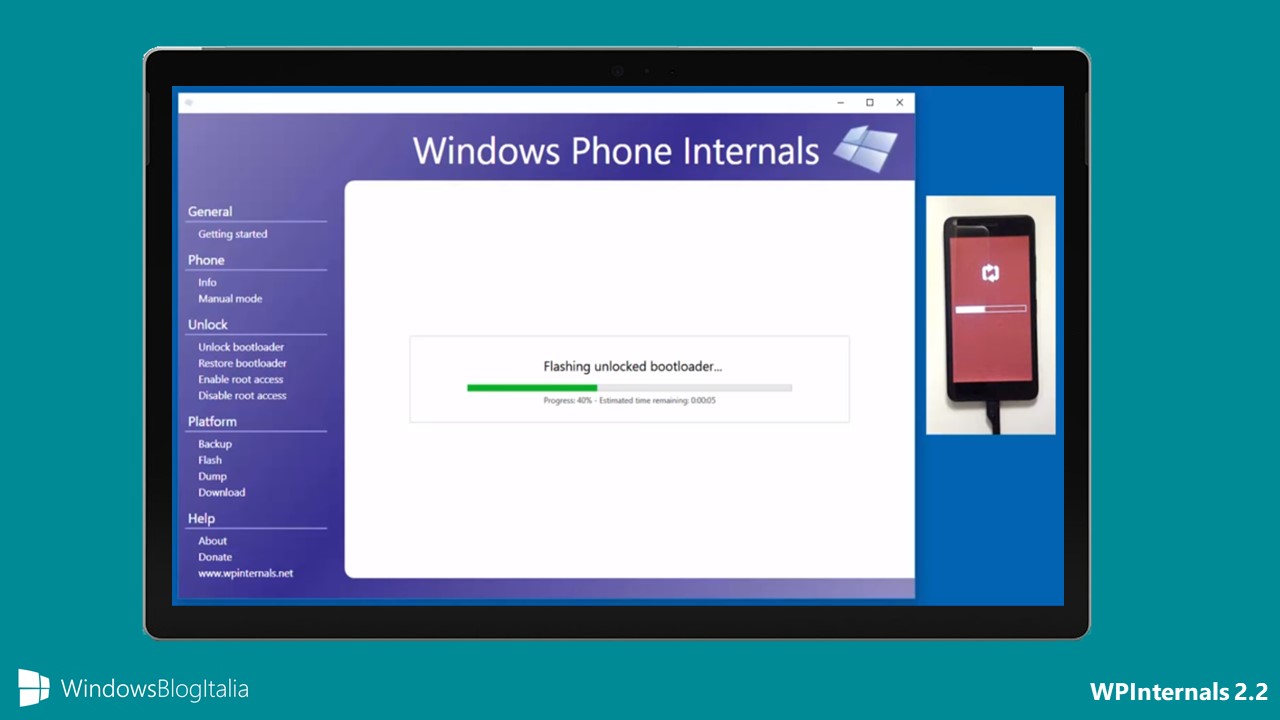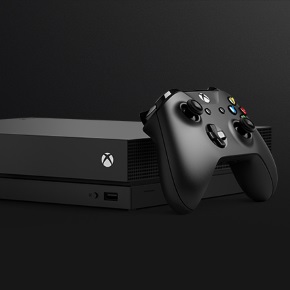
Il tool per lo sblocco completo dei Lumia, Windows Phone Internals, si aggiorna alla versione 2.5 con molti fix e qualche novità.
Windows Phone Internals 2.5
Questa nuova versione si concentra proprio sul fix di molti bug segnalati, ma c’è dell’altro. Il tool ora supporta le ultime build di Windows Mobile e la possibilità di aggiungere Custom ROM alla sezione download. Di seguito c’è la lista completa:
- FIX
On a small number of Lumia phones Windows Phone Internals was not able to find a Flashing Profile. The parameters which were checked have been extended in this version. This problem should be fixed now for most phones.- FIX
Windows Phone Internals 2.4 could crash when launched on Windows 7. This is fixed. In Windows Phone Internals 2.4 there was a fix for detecting misbehaving Mass Storage drivers. This detection doesn’t work properly on Windows 7. When Windows Phone Internals is launched on Windows 7 the detection for misbehaving Mass Storage drivers is disabled. So Windows Phone Internals doesn’t crash anymore on Windows 7, but for most stable unlocking behavior you should launch Windows Phone Internals on Windows 8.1 or on Windows 10.- FIX
When a corrupt FFU-file was used for unlocking, Windows Phone Internals could crash. FFU-files can get corrupted when the download is aborted. Windows Phone Internals will now verify the headers and the length of the FFU-file before the unlock-process starts.- FIX
Under some circumstances a phone could get stuck in Flash-mode after a stock FFU was flashed. This behavior is detected and in this case the phone is first relocked before the stock FFU is flashed to fix this problem.- FIX
Relocking a phone that was not unlocked, could leave the phone in flash-mode.- FIX
When a phone in Mass Storage mode has had a drive-letter assigned to partitions other than MainOS, the next time these drive-letters are also assigned. When a phone is unlocked, the extra drive-letters could confuse the unlock-process. Unlocking now checks the partition-names for correct behavior.- FIX
When unlocking a phone with Bootloader Spec A, which was already updated with new firmware, Windows Phone Internals could crash due to unexpected changes in the partition-layout. This is now detected and handled properly.- FIX
Some driver versions for Qualcomm Emergency Download mode failed to report a correct Bus Name. Because of this Windows Phone Internals was not able to detect the phone properly when it was switching to Emergency Download Mode. This could make Windows Phone Internals hang while trying to switch to Emergency Download mode when the phone was being unlocked. When the Bus Name in the driver is missing, Windows Phone Internals will make some assumptions to unlock the phone successfully.- FIX
On some engineering Lumia’s the function to switch to Mass Storage Mode did not work properly.- FIX
When there is no Profile FFU available, the button to restore the bootloader was disabled without a warning. Under these circumstances this new version will display a proper warning.- NEW FEATURE
New commandline functions for backing up and restoring the partition-table of the phone: BackupGPT and RestoreGPT. The backup-file is an XML-file containing all the information about the partitions. If you want you can edit this file and then restore it back to the phone. Obviously this is very risky and you should do this with caution and at your own risk!- NEW FEATURE
The archive of a Custom ROM can contain a file named “Partitions.xml”. When this file is present, it is parsed and merged with the existing partition-table on the phone. You can get an example of such XML-file by using the commandline to create a backup of the partition-table of the phone. The Partitions.xml file inside the archive does not need to be complete. Only new partitions and modified partitions need to be present inside the XML-file. For modified partitions, you only need the name and the modified properties. Other elements can be omitted. The information in the XML-file will be merged into the existing partition-table. This behavior can be tested using the commandline-function MergeGPT.- NEW FEATURE
Support for Windows Mobile 10.0.15254.490 and 10.0.15254.527, for both SecureBoot unlock and Root Access.- NEW FEATURE
You can add an existing FFU-file to the repository on the download-page of Windows Phone Internals.- LIMITATION
After unlocking the bootloader, the iris scanner does not work anymore on Lumia 950 and Lumia 950 XL. This is a limitation of SecureBoot Unlock v2. I already spent a fair amount of time to find a solution and I made some progress, but so far I haven’t found the root cause yet. To fix the problem you can restore the bootloader. Some people have reported that the Iris-scanner works after the phone is unlocked for the second time.- LIMITATION
Due to the complexity of SecureBoot Hack v2, unlocking mounted ROM images is only possible for Lumia’s with Bootloader Spec A. For Lumia’s with bootloader Spec B you can create Custom ROM’s with Root Access using the “Build and capture” technique, as described on the Getting started page.- LIMITATION
Occasionally the Mass Storage drivers on the PC can misbehave. In this case, the phone will be in mass storage mode, but the PC does not recognize it. This could affect the unlock process. Windows Phone Internals now has a detection-method for this behavior, but that only works on Windows 8.1 and Windows 10. So for the most stable unlock-experience, you should avoid Windows 7 or older.- LIMITATION
Lumia’s with Bootloader Spec B can only flash partitions on a 0x100 sector-boundary (or 0x20000 bytes-boundary). Your partition-layout should comply to this rule. When Windows Phone Internals calculates a new partition layout for a Custom ROM, the layout will automatically comply to this rule.- LIMITATION
The phone may boot to a Blue Screen after unlocking the bootloader. This is a limitation of SecureBoot Unlock v2. Some Windows 10 based phones need additional modifications to be able to boot properly after the bootloader is unlocked. The patches will be applied automatically if the OS on the phone is on a supported version. In case the phone doesn’t boot properly, you can still enter Mass Storage Mode if you want. To boot properly again, restore the bootloader. You can update to a supported OS version and try again after that.- LIMITATION
Some Silverlight apps may not work. This is a limitation of SecureBoot Unlock v2. The cause of this problem is known. For now this problem can be fixed by enabling Root Access on the phone.- LIMITATION
Some phones, namely the Lumia 535 models, may experience problems during the unlock process. The first part of the unlock succeeds, but when the phone is being switched to Mass Storage Mode, it is not able to find a working Flashing Profile anymore. This issue is under investigation.- LIMITATION
When you try to unlock or relock a phone with a non-supported OS version, then you will need to provide a donor-FFU with a supported OS-version. When unlocking or relocking the phone, modifications will be made to the phone, which may also cause the existing flashing-profile to become invalid. In this case Windown Phone Internals may need to search for a new flashing profile during any unlock- or relock-attempt.- LIMITATION
Windows Phone Internals supports only one single connected phone at a time. When multiple phones are connected, Windows Phone Internals can start showing unexpected and unstable behaviour.
E voi, avete provato lo sblocco completo dei vostri Lumia? Avete fatto altri esperimenti? Ditecelo nei commenti.
Articolo di Windows Blog Italia














